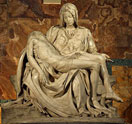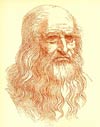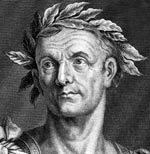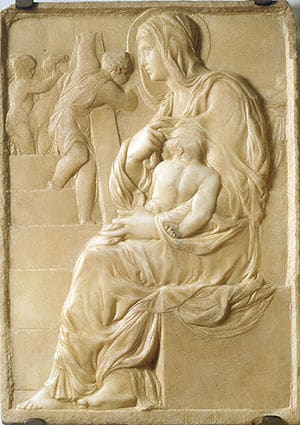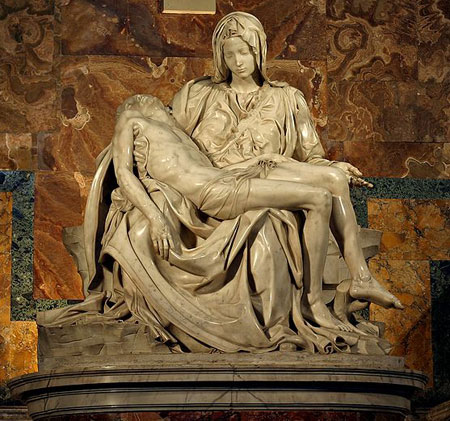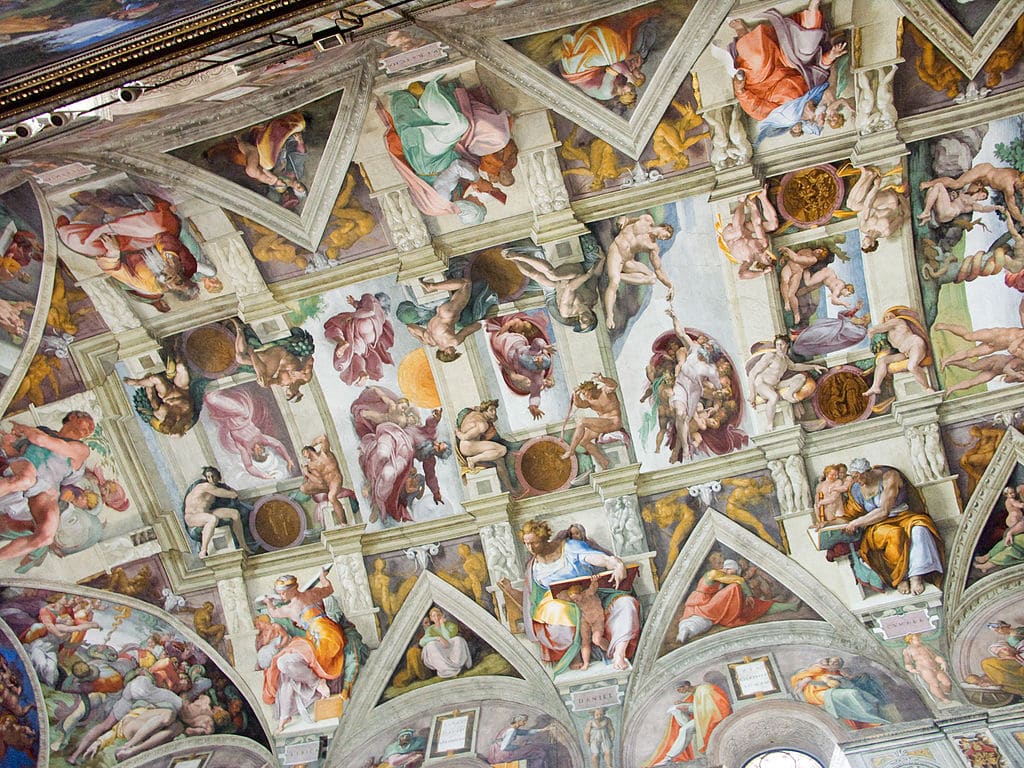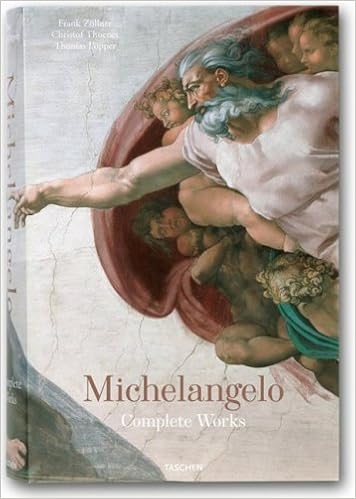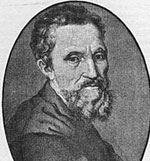
Short biography of Michelangelo
Michelangelo Buonarroti was born on 6 March 1475, in a Florentine village called Caprese. His father was a serving magistrate of the Florentine Republic and came from an important family.
However, Michelangelo did not wish to imitate his father’s career and was attracted to the artistic world. At the time, being an artist was considered an inferior occupation for a family of his standing. But, aged 13, Michelangelo was apprenticed to Domenico Ghirlandaio, the leading fresco wall painter in Florence. Here Michelangelo learned some of the basic painting techniques and also taught himself new skills such as sculpting. He loved sculpting more than painting, feeling that sculptor allowed the creation of living works of art.
His talents were soon noticed by one of the most powerful families in Florence – Lorenzo de’ Medici. Here, at de’ Medici’s court, Michelangelo was able to learn from the classic Masters. He also gained an all-round education, even taking part in dissections to learn more about the anatomy of the human body and muscles. He was also very ambitious becoming determined to improve upon the great classics of Greek and Latin art and become famous throughout the artistic world.
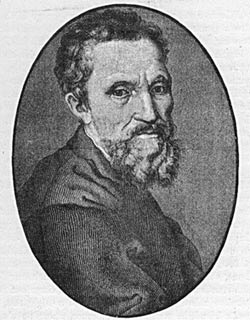
His Pietà can still be seen inside the Basilica of St Peter in Rome, Italy.
Michelangelo’s Pietà
His next most famous sculpture was his huge undertaking of a life-size David. This was hewn from a huge block of marble dragged down from a nearby Florentine mine. Michelangelo created a masterpiece, a perfection of the human form, and many agreed that Michelangelo had surpassed his classic predecessors. David was put pride of place in front of the seat of Florentine government. A remarkable feature of David and other Michelangelo’s sculptures was the smoothness of the finished product, he left no sign of any chisel mark – everything was beautifully smooth. He once claimed that the sculptures were already living in the marble and all he had to do was carve them out.
Michelangelo’s David
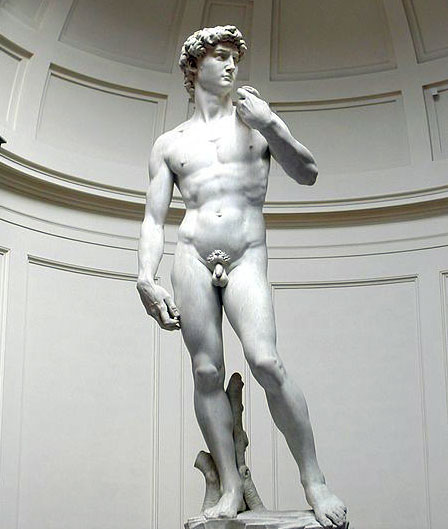
“I saw the angel in the marble and carved until I set him free. “
– Michelangelo
Michelangelo was a contemporary of the other sublime artist of his generation, the genius Leonardo da Vinci. However, with Michelangelo’s short temper and pride, the two had a difficult relationship. At one time, the Florentine government wanted the two geniuses of art to work side by side, each painting a side of a council chamber. But, it was not a success and neither finished.
In 1505, Pope Julius II summoned Michelangelo to Rome and commissioned him in a number of projects. The first was to create a magnificent tomb. However, this ran into problems as the Pope later diverted funds to the ambitious scheme to rebuild St Peter’s. Michelangelo was quick to anger – it did not matter even if it was the Pope. But the Pope deflected Michelangelo’s anger and, through a combination of persuasion, threat and flattery later offered Michelangelo a new commission to paint the ceiling of the Sistine Chapel.
The Creation of Adam from the Sistine Chapel
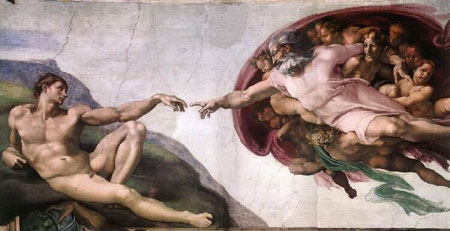
This was a huge undertaking which Michelangelo began in 1508. Initially, the Pope suggested scenes from the New Testament, but Michelangelo chose the Old Testament with its great variety of characters and dramatic scenes. The project took four years to complete and involved Michelangelo working in awkward positions with paint frequently dripping onto his face. After months of working at awkward angles, he developed serious neck pain, but he continued to work at a furious pace trying to do the great fresco painting singlehandedly. Despite the magnitude of the task, Michelangelo did not want to delegate any work to assistants. He wanted to succeed alone; he felt like it was his divine mission.
“If you knew how much work went into it, you would not call it genius.”
– Michelangelo as quoted in Speeches & Presentations Unzipped (2007) by Lori Rozakis, p. 71
On completion, everyone was awestruck by the magnificence of the work, including Pope Julius II. The vast work included the great Biblical stories of creation, the Great Flood and the Fall of Man, within this work, were nearly 300 figures. Michelangelo gained the reputation of the ‘divine Michelangelo’ – a reputation he was only too quick to encourage. Michelangelo suffered from no false modesty and always felt himself to be God’s artist.
“The greater danger for most of us lies not in setting our aim too high and falling short; but in setting our aim too low, and achieving our mark.”
― Michelangelo
In later years, Michelangelo returned to Florence and became embroiled in politics as he helped defend the city against the attacks of the De’ Medicis. When the city fell to the De’ Medicis, Michelangelo feared for his life. But, his fame as the greatest artist of his generation made him too valuable to kill and he was simply given more art to work on. In 1546, he was also appointed to be the architect for the redesign of St Peter’s in Rome.
In his final years, he became increasingly religious. His depth of religious feeling can be seen through his poetry and the direction of his art.
“The true work of art is but a shadow of the divine perfection.”
– Michelangelo
Michelangelo was a unique artist who created works of such sublime beauty his reputation will always be treasured.
Citation: Pettinger, Tejvan. “Biography of Michelangelo”, Oxford, UK. www.biographyonline.net, Published 25 Dec. 2009. Last updated 2 March 2020.
Complete works of Michelangelo
Michelangelo – The Complete works at Amazon
Related pages
